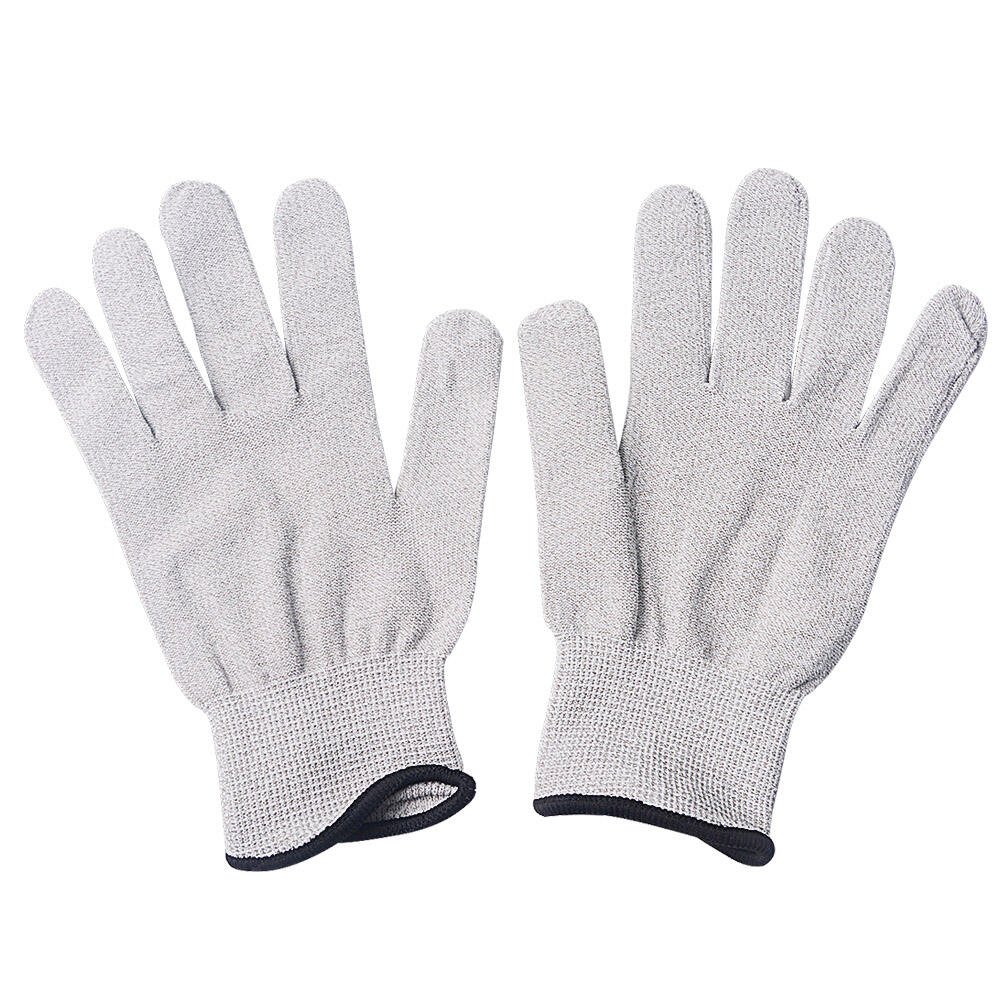In today's technology-driven world, the need for specialized protective equipment has grown exponentially. Workers in electronics manufacturing, telecommunications, and various industrial sectors face unique challenges that require innovative solutions. One such solution that has gained significant attention is the use of conductive gloves, which offer protection while maintaining electrical conductivity for sensitive operations.
The integration of conductive materials into hand protection represents a significant advancement in workplace safety technology. These specialized gloves combine traditional protective features with electrical conductivity, enabling workers to handle sensitive electronic components without risking damage from electrostatic discharge while maintaining personal safety standards.
Understanding Conductive Glove Technology
Material Composition and Design
Modern conductive gloves incorporate advanced materials such as carbon fiber threads, metallic yarns, and specialized conductive polymers. These materials are woven into the fabric structure to create a continuous electrical path while maintaining flexibility and comfort. The integration process requires precise engineering to ensure uniform conductivity across the entire glove surface.
The base materials typically include high-quality synthetic fibers or natural materials treated with conductive coatings. Silver-plated nylon threads are commonly used due to their excellent conductivity properties and durability. The weaving pattern and thread density play crucial roles in determining the overall performance characteristics of the finished product.
Electrical Properties and Performance Standards
Conductive gloves must meet specific electrical resistance standards to be effective in their intended applications. Most industrial-grade products maintain surface resistivity levels between 10^4 to 10^6 ohms per square, providing adequate conductivity for electrostatic discharge prevention while ensuring user safety.
Testing protocols for these products involve comprehensive electrical measurements under various environmental conditions. Temperature, humidity, and mechanical stress factors all influence the electrical performance, requiring rigorous quality control measures during manufacturing and regular performance verification in operational environments.
Industrial Applications and Use Cases
Electronics Manufacturing Environments
In semiconductor fabrication facilities and electronics assembly operations, conductive gloves serve as essential protective equipment. These environments require stringent electrostatic discharge control measures to prevent damage to sensitive components worth thousands of dollars.
Assembly line workers handling printed circuit boards, microprocessors, and other electronic components benefit from the dual protection these gloves provide. The conductive properties help dissipate static charges while the physical barrier protects against cuts, abrasions, and chemical exposure from cleaning solvents and flux materials.
Telecommunications and Data Center Operations
Telecommunications technicians and data center personnel frequently work with sensitive networking equipment that requires careful handling. Conductive gloves enable these professionals to perform installations, maintenance, and repairs while minimizing the risk of equipment damage from static discharge.
Server maintenance activities, fiber optic cable installations, and network switch configurations all benefit from the use of conductive hand protection. The ability to maintain tactile sensitivity while providing electrical safety makes these gloves invaluable for precision work in critical infrastructure environments.
Performance Advantages and Benefits
Enhanced Safety Features
Beyond their conductive properties, these specialized gloves offer comprehensive hand protection against various workplace hazards. Cut resistance, puncture protection, and chemical resistance are commonly integrated features that provide multi-faceted safety benefits for industrial workers.
The ergonomic design considerations ensure that workers can maintain dexterity and grip strength during extended use periods. Advanced manufacturing techniques create seamless construction that reduces pressure points and enhances comfort during prolonged operations.
Cost-Effectiveness and Productivity Impact
While conductive gloves represent a higher initial investment compared to standard protective gloves, their specialized functionality often results in significant cost savings over time. Reduced equipment damage from electrostatic discharge incidents and decreased downtime contribute to improved operational efficiency.
The durability of quality conductive gloves ensures extended service life, reducing replacement frequency and associated procurement costs. Many industrial operations report return on investment within months of implementation due to reduced equipment failures and improved worker productivity.
Selection Criteria and Considerations
Environmental Requirements Assessment
Selecting appropriate conductive gloves requires careful evaluation of the specific operating environment and application requirements. Factors such as temperature extremes, chemical exposure, mechanical hazards, and required dexterity levels all influence the optimal product selection.
Cleanroom environments may require lint-free materials and specialized cleaning protocols, while heavy industrial settings might prioritize cut resistance and durability over other features. Understanding these requirements ensures optimal performance and user satisfaction.
Compliance and Certification Standards
Industry standards and regulatory requirements play crucial roles in product selection decisions. Compliance with ANSI, EN, or other relevant standards ensures that the chosen conductive gloves meet minimum performance requirements for their intended applications.
Certification documentation provides verification of electrical properties, mechanical performance, and safety characteristics. Regular recertification and performance monitoring help maintain compliance with evolving industry standards and workplace safety regulations.
Maintenance and Care Requirements
Cleaning and Sanitization Protocols
Proper maintenance of conductive gloves is essential for preserving their electrical properties and extending service life. Cleaning procedures must be carefully designed to avoid damaging the conductive fibers while ensuring adequate hygiene standards.
Most conductive gloves can be machine washed using mild detergents and specific temperature settings. However, fabric softeners and bleaching agents should be avoided as they can interfere with the conductive properties and reduce the effectiveness of the protective equipment.
Storage and Handling Best Practices
Proper storage conditions help maintain the integrity of conductive gloves during periods of non-use. Controlled temperature and humidity environments prevent degradation of the conductive materials and extend the useful life of the equipment.
Regular inspection protocols should be established to identify signs of wear, damage, or performance degradation. Early detection of issues allows for timely replacement and prevents potential safety incidents or equipment damage.
Future Developments and Innovations
Advanced Material Technologies
Research and development efforts continue to advance the capabilities of conductive gloves through innovative material technologies. Nanotechnology applications, smart fabrics, and improved conductive coatings promise enhanced performance and new functionality options.
Emerging materials such as graphene-enhanced fibers and conductive polymers offer potential improvements in conductivity, durability, and comfort. These developments may enable new applications and improve the overall value proposition of conductive hand protection.
Integration with Smart Systems
Future conductive gloves may incorporate sensors and communication capabilities to provide real-time monitoring of electrical conditions and user safety parameters. Integration with workplace safety systems could enable automated alerts and performance tracking.
Internet of Things connectivity and data analytics capabilities may transform how conductive gloves are monitored, maintained, and optimized for specific applications. These technological advances promise to further enhance the value and effectiveness of conductive hand protection solutions.
FAQ
How long do conductive gloves typically last in industrial use
The lifespan of conductive gloves varies significantly based on usage intensity, environmental conditions, and care practices. In typical industrial applications, quality conductive gloves can last 3-6 months with regular use. Heavy-duty applications may require replacement every 1-2 months, while lighter-duty applications might extend service life to 6-12 months. Regular inspection and proper maintenance are key factors in maximizing glove longevity.
Can conductive gloves be used in wet or humid environments
Most modern conductive gloves are designed to maintain their electrical properties in moderate humidity conditions. However, excessive moisture can affect conductivity and may compromise safety performance. Many products feature moisture-wicking treatments or waterproof coatings for specific applications. Always consult manufacturer specifications and test performance under actual operating conditions before deployment in challenging environments.
What safety certifications should I look for when purchasing conductive gloves
Look for certifications from recognized standards organizations such as ANSI, EN, or ISO depending on your geographic location and industry requirements. Key certifications include electrical resistance measurements, cut resistance ratings, and chemical compatibility testing. Third-party testing verification ensures that the gloves meet stated performance specifications and safety requirements for your specific application.
Are conductive gloves compatible with touchscreen devices
Many modern conductive gloves are specifically designed for touchscreen compatibility, allowing users to operate tablets, smartphones, and industrial touch panels without removing their protective equipment. However, not all conductive gloves offer this feature, so verify touchscreen compatibility if this functionality is required for your application. The conductivity level and fingertip design affect touchscreen responsiveness and accuracy.





